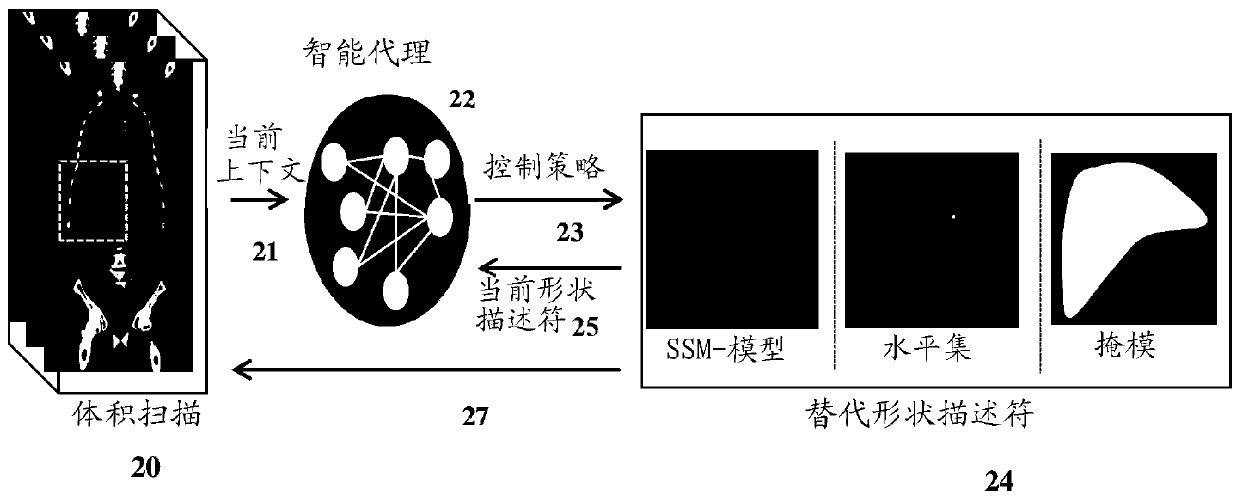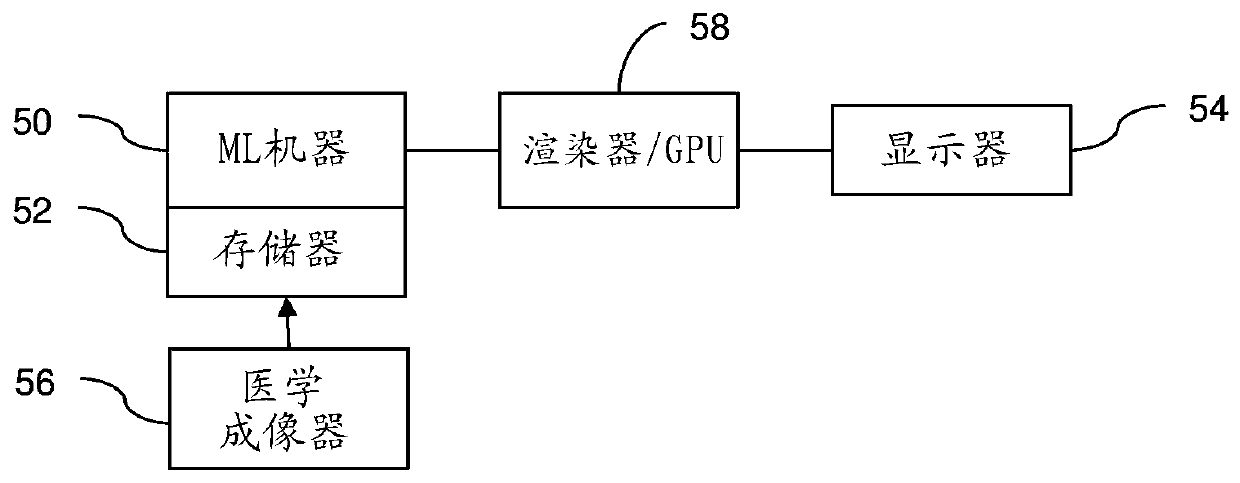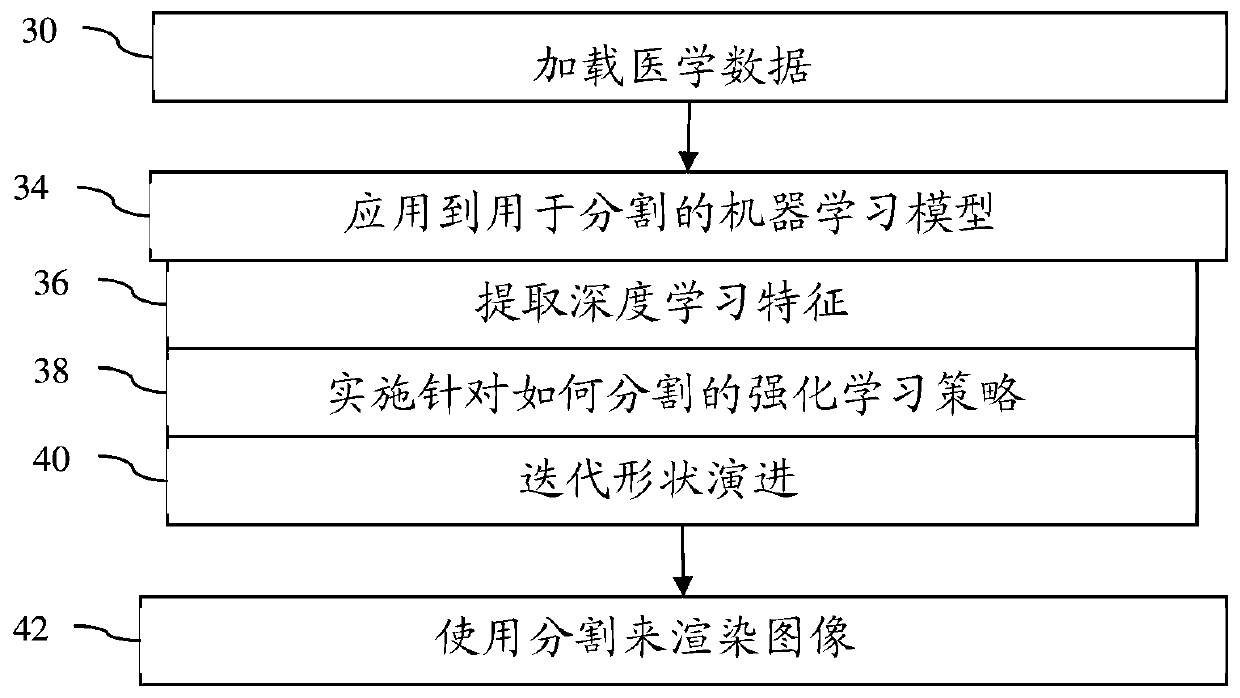Multi-scale deep reinforcement machine learning for n-dimensional segmentation in medical imaging
A technology of machine learning and machine learning models, applied in the field of multi-scale deep reinforcement machine learning for N-dimensional segmentation in medical imaging
- Summary
- Abstract
- Description
- Claims
- Application Information
AI Technical Summary
Problems solved by technology
Method used
Image
Examples
Embodiment Construction
[0014] Multi-scale deep reinforcement learning generates a multi-scale deep reinforcement model for N-dimensional (for example, 3D) segmentation of objects, where N is an integer greater than 1. In this context, segmentation is explicitly expressed as learning an image-driven strategy for shape evolution that converges to the boundary of the object. This segmentation is regarded as a reinforcement learning problem, and scale space theory is used to achieve robust and efficient multi-scale shape estimation. By learning an iterative strategy to find the segmentation, the learning challenge of the end-to-end regression system can be solved.
[0015] Although trained as a complete segmentation method, the trained strategy can be used instead or also as a post-processing step for shape refinement. Any segmentation method provides initial segmentation. Assuming that the original segmentation is used as the initial segmentation in the multi-scale deep reinforcement machine learning mo...
PUM
 Login to View More
Login to View More Abstract
Description
Claims
Application Information
 Login to View More
Login to View More - R&D
- Intellectual Property
- Life Sciences
- Materials
- Tech Scout
- Unparalleled Data Quality
- Higher Quality Content
- 60% Fewer Hallucinations
Browse by: Latest US Patents, China's latest patents, Technical Efficacy Thesaurus, Application Domain, Technology Topic, Popular Technical Reports.
© 2025 PatSnap. All rights reserved.Legal|Privacy policy|Modern Slavery Act Transparency Statement|Sitemap|About US| Contact US: help@patsnap.com



